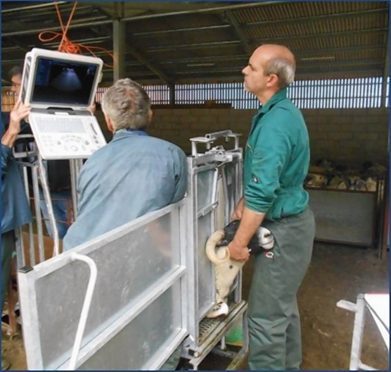Scots researchers are using techniques from human medicine to help develop a test for a deadly respiratory disease in sheep.
Scientists at the Moredun Research Institute are looking into several different techniques to diagnose ovine pulmonary adenocarcinoma (OPA) or jaagsiekte sheep retrovirus (JSRV) as it is sometimes known.
OPA is a cancer caused by JSRV – the virus causes cells in the lung to become cancerous and these cells then produce more viruses which can infect new areas of the lung or other sheep.
The disease is thought to be present in around 10% of flocks in Scotland, while a recent abattoir study found the disease in 1% of apparently healthy cull ewes and in a study at a fallen stock yard it was present in around 6% of all sheep.
Typical signs of OPA include weight loss and increased respiratory effort after exercise and at rest.
The early stages of the disease cannot be clinically diagnosed as the tumours in the lungs are too small to cause any breathing problems, although they are able to produce viruses which can infect other sheep.
To tackle this, the Moredun’s Chris Cousens and David Griffiths are involved in several projects to develop a test for the disease.
One project is trying to develop a method to diagnose OPA using tumour biomarkers.
According to the researchers, this is a cutting-edge technology in human medicine that could also prove valuable in veterinary medicine. The pair are currently measuring how gene is expression is altered in the sheep lung during OPA, which will help identify new biomarkers of the disease.
Another project, being carried out in conjunction with Phil Scott, of Capital Veterinary Services, is looking at whether or not ultrasound can be used to diagnose OPA at an earlier stage than is possible from clinical signs.
Ultrasound has been found to reliably detect OPA tumours of 2cm or more in size, however it cannot be used to guarantee that sheep are OPA-free because it cannot detect the smallest tumours.
As a result, the researchers plan to use the technique to determine whether screening flocks over several years and removing all sheep identified with OPA will successfully reduce or eliminate the disease in these flocks.
Moredun researchers are also carrying out studies on how the virus is able to cause OPA and whether or not they can identify genes associated with susceptibility or resistance to the disease in sheep.
